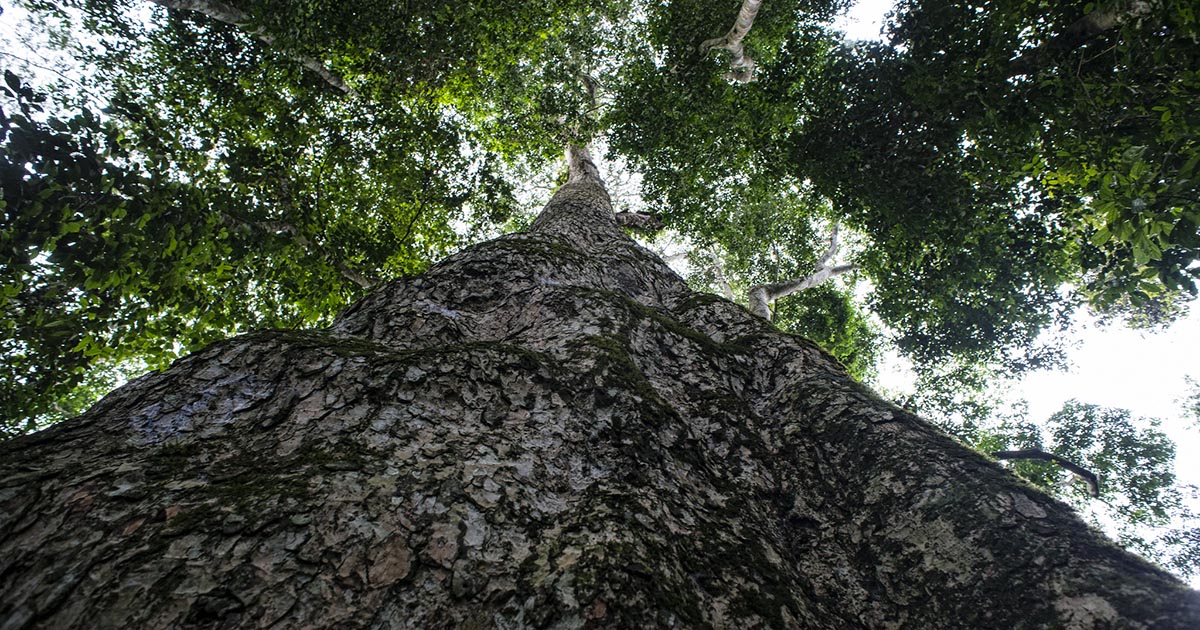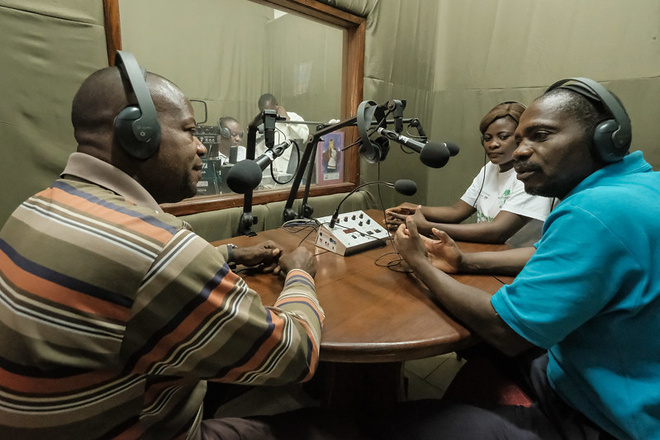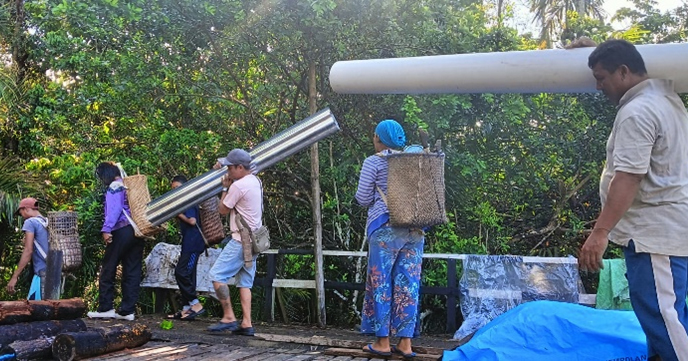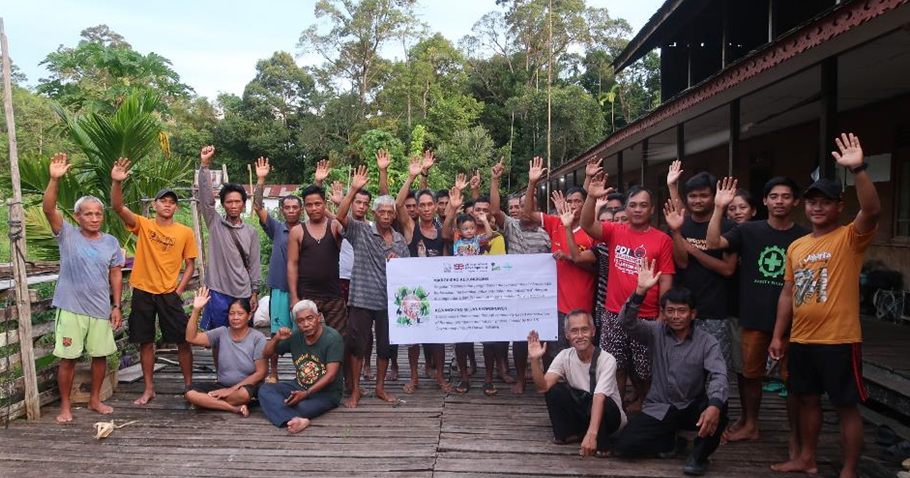
By Moira Moeliono, Hasantoha Adnan, Heri Valentinus, and E. Linda Yuliani
Deep in the interior of Kapuas Hulu, amidst dense tropical rainforest, lie four villages – Sungai Pelaik, Kedungkang, Entebuluh, and Sungai Iring – where the Iban Dayak people have lived and managed their forests for generations. Beyond formally protected zones, these community-managed forests serve as the last refuge for orangutans and countless other species.
Isolated from the bustle of modern life, the people here live in harmony with nature; the forests and rivers are not merely geographical features but sources of life and guardians of ecological balance – integral to their traditions. Despite their important role in conservation, these communities continue to face the harsh reality of isolation.
While other areas have advanced, these villages still lack many basic services, particularly electricity. The government once distributed solar panels, but without maintenance guidance. Most panels have since broken down or provide power for only a few hours each day. Many households depend on fuel-based generators, but these are costly as fuel must be transported from distant towns. This deepens inequality and limits opportunities for livelihoods and information access.
A new dawn
In 2023, light finally pierced the darkness that had long enveloped these villages. Two micro-hydro installations began operating in Kedungkang and Sungai Pelaik, followed by two more in 2024. When the turbines in Sungai Pelaik started on New Year’s Eve, villagers rejoiced: “A new year, a new light – a hopeful sign that next year will be better for us all.” In Entebuluh, the lights came on 16 August 2024, the day before Independence Day. People chanted, “This is real independence: freedom from darkness.”

Aleksius Bulin, Head of Batang Lupar Sub-district, inaugurated the systems on behalf of the Regent of Kapuas Hulu. The event symbolised progress and recognition of the communities’ long-standing efforts to protect forests, rivers, and wildlife habitats – now rewarded with clean, sustainable energy.
Why micro-hydro works?
Micro-hydropower plants are increasingly popular as practical solutions for providing clean, affordable energy to remote rural areas. The technology is well-recognised and widely adopted in Indonesia, with most components available locally, including from several manufacturers in Bandung.
A typical micro-hydropower plant includes a dam that regulates water flow and drive a turbine, as well as a generator that converts mechanical energy into electricity. However, experience from other projects have shown several reasons why such systems often failed prematurely. In many cases, the turbine and generator were built as a single, complex unit that could only be repaired by factory technicians located far from the site. Another common issue was poor dam design. Many short-lived projects used dams that completely blocked the river. During the rainy season, these dams often caused flooding, damaging nearby trees, and sometime broke beyond repair.
For long-term success, communities must understand how these systems work – how water flow is transformed into mechanical and then electrical energy – and how to maintain each component independently.
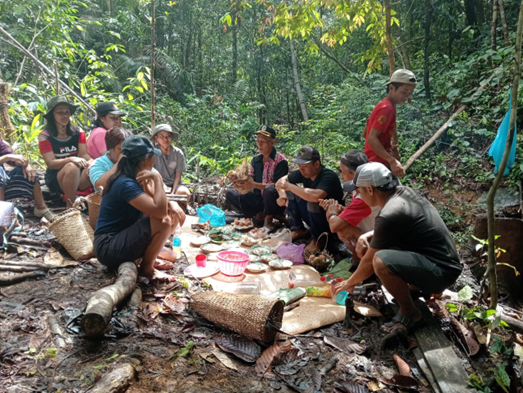
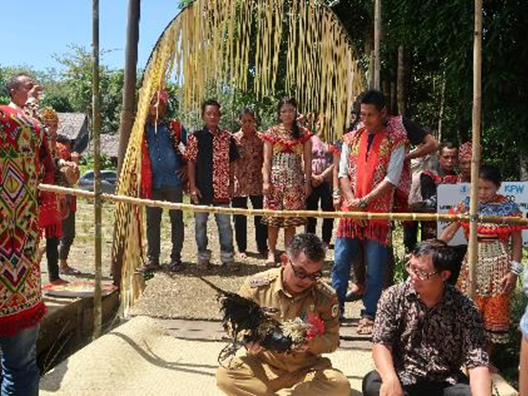
In the four hamlets, a different approach was taken. The turbines and generators were constructed as separate units to simplify maintenance, and water reservoirs were built instead of dams. A diversion channel directs river water into a reservoir and onward to the turbine, maintaining a steady flow without damming the river. This approach minimises flood and landslide risks while preserving water for other uses. Maintaining a stable water flow requires healthy forests – linking energy access directly to ecosystem protection. The light in every home now depends on the integrity of the surrounding forests.
The long road to seek light
The construction of these systems was a collective effort. Villagers volunteered labour and supplied materials such as sand and stones. They were supported by community-based micro-hydro expert Ridwan Soleh and his team, the Riak Bumi Foundation, and CIFOR, with funding from the Darwin Initiative (UK Government) and Germany’s IKI-BMUB.
The project followed six main stages:
- Village selection
Villages were chosen based on their proven long-term commitment to protect orangutans and their habitat under customary norms, they are located far from the national grid, and are willing to collaborate, build and maintain the systems independently. These consultations were crucial in assessing their willingness and readiness to participate in this process.
- Initial survey
Experts and villagers conducted surveys to study the rivers and landscape characteristics that would be most suitable. As part of the initial survey, the community learned the basics to convert water flow into mechanical and subsequently into electrical energy.
- Learning phase
Village representatives visited Naringgul Village in Cianjur, West Java, to learn first-hand how other communities build and manage micro-hydro systems and how electricity improves livelihoods. They also visited Heksa Hidro for technical training. This peer-to-peer exchange sparked ideas on adapting suitable technology to local conditions.
Back home, participants shared their knowledge about turbine types, maintenance, safety, budgeting, and management. The community agreed to rotate responsibilities, balancing training with daily work.
Hands-on training in Naringgul Village, West Java (left) and at the Heksa Hidro training facility (right). - Construction
Before construction began, communities and consultants finalised technical designs together – ensuring shared understanding and ownership. Residents built water reservoirs, channels, forebays, and powerhouse structures. Experts supervised the installation of turbines and generators while transferring knowledge to the villagers. A table summarising conditions before and after having access to electricity.
Women played active roles throughout construction and training. (left), and peer-to-peer training (right). Before-after conditions of the access to electricity in the four hamlets The community’s electricity grid now lights all rooms, terraces, walkways, and bridges are now connected to the community electricity grid. A significant improvement. When the lights came on, villagers exclaimed: “Water has generated light!”
- Management and maintenance
After construction, the community formed a maintenance team and established local rules for operations, inspections, and repairs. Fortunately, the local villagers’ prior experience operating and repairing generators helped them adapt easily to the new systems. Further mentoring strengthened institutional capacity for long-term sustainability.
- Handover and inauguration
The formal handover by the Head of Batang Lupar Sub-district marked both the completion and a new beginning – signifying the villagers’ ownership of a new micro-hydro system for years to come.
Water, light, and community
Electricity has transformed the community’s quality of life. Children can now study at night, families watch television, women weave under bright light and connect buyers using the internet. Families can save money once spent on expensive fuel. In Sungai Pelaik, villagers once used 15 litres of fuel each night to run generators; with micro-hydro, they save about IDR 4.5 million per month – funds which can be spent on other needs.
More significant is the strengthened sense of community and increased technical and managerial capacity. The micro-hydro journey has built a sense of responsibility and collective purpose – essential foundations for further development.
Micro-hydro technology continues to evolve and adapts well to remote conditions. It is affordable, easy to maintain, and environmentally friendly. Linking energy access to sustainable forest and water management offers a model for the future. As energy needs grow, there is strong potential for replication and scale-up across similar communities. Multiple turbines can even be linked to increase capacity through collaboration with government, industry, and civil society.
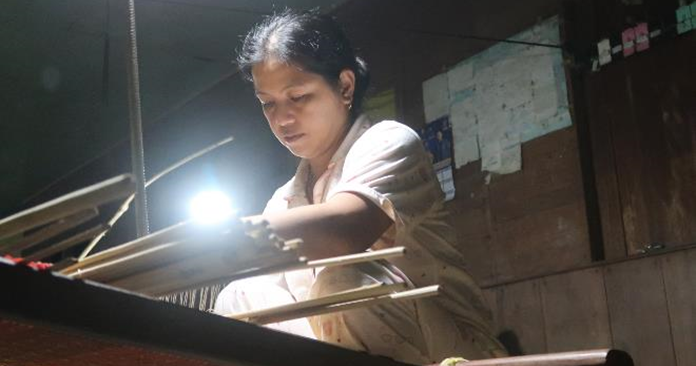
A brighter future
For the people of Kedungkang, Sungai Pelaik, Entebuluh, and Sungai Iring, one lesson is clear: without forests there is no water, and without water there is no electricity. Their determination to protect the environment ensures that today’s success will benefit generations to come.
Under the lights that now illuminate their longhouses, villagers envision a future where nature and people thrive together. “Mayas Idup, Api Idup” – protecting the life of orangutans brings light to life.
Every drop turning the turbines represents collaboration between humans and nature, a reflection of harmony between conservation and community wellbeing. These micro-hydro systems stand as living proof that, with commitment and cooperation, communities can protect their natural heritage while embracing progress.





